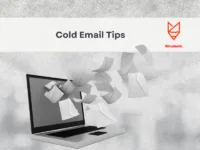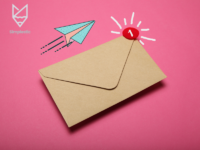Crafting effective subject lines for follow-up emails is essential for making a strong impression. The right subject line can increase your chances of getting a response and keeping the conversation going. It serves as the first thing your recipient sees, so it needs to grab their attention and convey the purpose of your message.
A great subject line sets the tone for the email and encourages the recipient to open it. You want to be clear and concise, while also highlighting the value of your follow-up. Using personalized language or a friendly tone can make your email stand out in their crowded inbox.
In this blog post, you will discover tips and examples that can help you create subject lines that work. Whether you are reaching out after a meeting, sending a reminder, or checking in on a previous conversation, the right approach can make all the difference.
Aim of Follow-up Emails
Follow-up emails play a crucial role in communication. They help you connect with recipients after initial contact. Here are some key reasons to send follow-up emails:
- Remind: They serve as a gentle reminder of previous conversations or requests.
- Clarify: You can clarify any points that may have been misunderstood.
- Engage: Following up keeps the conversation going and shows your interest.
These emails can break the ice in professional relationships. They can also boost your chances of getting a response.
When you follow up, you show that you value the recipient’s time and input. This can help build trust and encourage further dialogue.
Your follow-up email should be respectful and to the point. Here are tips for writing effective follow-up emails:
- Be Clear: State your purpose right away.
- Be Brief: Keep your message short and focused.
- Be Courteous: Thank the recipient for their time and any previous help.
Remember, the purpose is not just to ask for something but to strengthen your connection. This can lead to beneficial outcomes for both you and your recipient.
Creating effective subject lines for your follow-up emails is key to getting attention. You want to engage the reader right away. Personalization and action-oriented language can greatly improve how your emails are received.
Personalization Techniques
Use the recipient’s name to make the message feel more direct. For example, “John, a Quick Follow-Up” helps create a connection.
You can also mention something specific about your last conversation. This shows that you remember the details and care about the relationship. Try phrases like, “Following Up on Our Chat About [Topic].”
Additionally, consider using information from their LinkedIn or company website. This allows you to create a subject line that feels tailored. For instance, “Your Insights on [Industry Trend]” shows you value their opinion.
Action-Oriented Language
Using action-oriented language in your subject lines can encourage readers to take steps. Start with verbs to create urgency. Phrases like “Let’s Connect” or “Review This Proposal” prompt immediate action.
You can also convey benefits in your subject lines. For example, “Discover New Strategies to Boost Sales” highlights what they will gain from reading your email.
Keep it concise and clear. Short subject lines are easier to read quickly. Aim for under 50 characters if possible, so your email is more likely to be opened. Remember that your goal is to spark interest, not to explain everything at once.
Timing Your Follow-Up
Choosing the right time to follow up can make a big difference in your email’s success. It’s important to find a balance between being persistent and respectful. Consider the timing and frequency carefully.
When to send your follow-up email can vary based on context. Here are some suggestions for effective timing:
- 24 to 48 hours after the initial email: This timeframe shows you are interested without seeming pushy.
- Mid-week timing: Sending emails on Tuesday or Wednesday can increase open rates. Avoid Mondays and Fridays, as people might be busy or winding down.
- Consider the recipient’s time zone: Make sure you send your email at an appropriate time for them. An early morning slot might catch their attention.
- Follow up after events or meetings: If you met the person at an event, send a follow-up email shortly after to keep the conversation fresh.
Common Questions About Follow-up Emails:
1. Did I wait too long to follow up?
The appropriate timing for a follow-up can vary based on the context of your initial email and the urgency of the matter. Generally, waiting too long (more than a week or two) can lead to the recipient forgetting about your previous email. If you’re unsure, it’s better to err on the side of following up sooner rather than later. A polite follow-up after a week is usually acceptable.
2. Should I schedule an email for a specific time?
Yes, scheduling an email for a specific time can be beneficial, especially if you want to ensure it arrives when the recipient is likely to be checking their inbox. Consider the recipient’s time zone and typical work hours. Sending emails early in the morning or mid-week tends to yield better response rates.
3. What days are best for sending follow-ups?
Mid-week days, particularly Tuesday, Wednesday, and Thursday, are often considered the best days for sending follow-ups. People tend to be more engaged and focused during these days, as Mondays can be busy with catching up from the weekend, and Fridays may see a decline in responsiveness as the week winds down.
4. Is it okay to follow up on the weekend?
While it is technically okay to follow up on the weekend, it’s generally not recommended unless the matter is urgent. Many people do not check work emails during the weekend, so your message may get lost among others when they return to work. If you send a follow-up on the weekend, consider scheduling it to arrive on a Monday morning instead.
5. How do I know if my email was read?
There are a few methods to determine if your email was read:
- Read Receipts: Some email platforms allow you to request read receipts, which notify you when the recipient opens your email. However, this feature can be disabled by the recipient.
- Email Tracking Tools: There are various email tracking tools available that can provide insights on whether your email was opened and how many times it was viewed.
- Follow-Up Response: Often, the best way to know if your email was read is to follow up. If the recipient responds, it’s a good indication that they received and engaged with your message.
Keep in mind that while these methods can provide insights, they may not always be foolproof, and it’s essential to respect privacy and boundaries in professional communication.
Frequency and Persistence
Finding the right frequency for your follow-ups is also important. Here’s how to manage it:
- One to three follow-ups: Sending one or two follow-ups is usually effective. More than three may come off as desperate.
- Space out your emails: Wait about a week between each follow-up. This gives your recipient time to respond while keeping you on their mind.
- Change your message: If you are not getting a response, try revising your message. Add new information or a different question to spark interest.
- Be mindful of timing: If the person is known to be busy, adapt your follow-up schedule accordingly to avoid adding pressure.
- How often should I follow up if I get no response?
- What if I get a reply but no answer to my question?
- Should I follow up if my last email was ignored?
- How can I make my follow-ups stand out?
- Is it okay to call after several emails?
1. How often should I follow up if I get no response?
The general rule of thumb is to wait about 3 to 7 days after your initial email before sending a follow-up. If you still don’t receive a response, you can follow up again after another week. After two or three follow-ups without a response, it might be best to reassess the situation or consider that the recipient may not be interested.
2. What if I get a reply but no answer to my question?
If you receive a reply but your specific question wasn’t addressed, it’s perfectly acceptable to send a polite follow-up email. You can express appreciation for their response and gently reiterate your question. For example, you might say, “Thank you for your reply! I wanted to follow up on my previous question regarding [specific question]. I would appreciate your insights.”
3. Should I follow up if my last email was ignored?
Yes, following up is a good practice if your last email was ignored. It shows persistence and interest. Just ensure that your follow-up is polite and respectful, acknowledging that the recipient may have been busy. A simple message like, “I wanted to check in on my previous email regarding [topic]” can suffice.
4. How can I make my follow-ups stand out?
To make your follow-ups stand out, consider the following tips:
- Personalize Your Message: Reference previous conversations or specific details relevant to the recipient.
- Be Concise: Keep your follow-up brief and to the point, respecting the recipient’s time.
- Add Value: Include new information, insights, or resources that might interest the recipient.
- Use a Catchy Subject Line: A compelling subject line can grab attention and encourage the recipient to open your email.
- Change the Format: If you’ve been sending emails, consider switching to a different format, such as a direct message on LinkedIn or a brief phone call.
5. Is it okay to call after several emails?
Yes, it can be appropriate to call after several emails, especially if you have not received a response and the matter is time-sensitive. Before calling, ensure that you have a valid reason for the call and that it aligns with the context of your previous emails. When you do call, be respectful of their time and briefly explain the purpose of your call.
Subject Line Do’s and Don’ts
Finding the right balance in your email subject lines is important. You want to catch attention but also be truthful. Here are some tips to help you avoid mistakes and act ethically.
Common Pitfalls to Avoid
- Being Vague: Avoid subject lines that are unclear. For example, “Quick Question” does not tell the receiver what the email is about. Instead, try “Question About Our Last Meeting.”
- Using All Caps: Subject lines in all caps appear aggressive. Use normal capitalization for a professional tone.
- Overly Long Lines: Aim for around 6-10 words. Longer lines can get cut off in email previews. Keep it brief and to the point.
- Misleading Information: Some people might be tempted to write misleading subject lines to get opened. This can damage your reputation and trust. Always match the subject line to the content of the email.
Ethical Considerations
It’s essential to keep ethics in mind when writing subject lines.
- Be Honest: Never use tactics that are misleading. If your email is a reminder, say so. Don’t trick someone into opening an email.
- Respect Privacy: Avoid using information that is sensitive or private in your subject lines. Keep personal details out and focus on the topic at hand.
- Maintain Professionalism: Your subject line reflects your brand. Use polite and professional language to show respect for the recipient.
By following these guidelines, you can create subject lines that are both effective and respectful.
Testing and Optimizing Subject Lines
To create effective subject lines, testing and optimizing are essential. This helps you understand what works best for your audience. Focus on trying different approaches and analyzing the results.
A/B Testing Methods
A/B testing is a powerful way to find the best subject lines. You create two variations of your subject line and send each version to a small group. For example:
- Version A: “Quick Reminder About Our Meeting”
- Version B: “Don’t Forget Our Meeting Tomorrow!”
You can send these to different segments of your audience. After a short period, check which subject line led to more opens.
You might also test other elements, like tone and length. Keep track of different factors to see what your audience prefers. Aim for a clear and direct message, but don’t hesitate to try something more creative.
Analyzing Open Rates
Open rates tell you how successful your subject lines are. To analyze this, look at the percentage of people who opened your email compared to those who received it. A higher open rate indicates strong interest.
You can calculate the open rate with this formula:
Open Rate (%) = (Number of Opens / Number of Emails Sent) x 100
Evaluate the results from your tests to find trends. For instance, shorter subject lines often perform better. Additionally, words like “urgent” or “limited time” may boost open rates.
Keep a record of the data to help inform your future subject lines. Use this analysis to fine-tune your strategies and improve your emails.
55 Examples of Successful Follow-Up Subject Lines
- Just Checking In
- Quick Follow-Up
- Following Up on Our Last Conversation
- Any Updates on My Application?
- Touching Base After Our Meeting
- Reminder: [Meeting Date]
- Just a Friendly Reminder
- Following Up to See if You Need More Info
- Did You Get My Last Email?
- Looking Forward to Your Response
- How Did Your Meeting Go?
- Following Up on [Project/Task Name]
- Grateful for Your Feedback
- Hope You’re Doing Well
- A Quick Note to Follow Up
- Request for Your Thoughts
- Checking on [Specific Topic]
- Are We Still on Track?
- Following Up for Clarity
- It’s Been a While—Let’s Connect
- Any Update on [Specific Issue]?
- Just Following Up—Excited to Hear Back
- A Gentle Reminder
- Following Up on Our Chat
- Hope You’ve Had Time to Review
- Ready When You Are
- Any Thoughts on My Proposal?
- Would Love to Hear from You
- Looking for Your Insights
- Hoping to Hear Back Soon
- Did You Have a Chance to Think It Over?
- Quick Note to Check Status
- Checking in on [Date/Deadline]
- Just a Quick Follow-Up
- A Friendly Check-In
- Following Up on Our Last Discussion
- Eager to Get Your Feedback
- How Can I Help You?
- Let’s Keep the Conversation Going
- Still Interested in Your Feedback
- Remember Me? Following Up
- Hope to Hear from You Soon
- Looking Forward to Your Reply
- Any Thoughts on Our Last Talk?
- Just a Quick Follow-Up Note
- Wanted to Touch Base
- Checking In on Our Project
- Your Input Would Be Appreciated
- Just a Friendly Nudge
- A Quick Check on [Project/Task]
- Requesting Your Thoughts
- Hoping to Connect Soon
- Just Checking on [Specific Task]
- Following Up on Your Last Message
- Looking to Hear Back from You
Leveraging Email Analytics
Using email analytics helps you improve your follow-up emails. By understanding the key metrics, you can see what works and what doesn’t in your email strategy.
Understanding Metrics
In email analytics, you should focus on several important metrics. Open Rate tells you how many recipients opened your email. A high open rate means your subject lines grab attention.
Click-Through Rate (CTR) measures how many people clicked on links in your email. If your CTR is low, you may need to change your content or call-to-action.
Conversion Rate shows how many recipients took a desired action after clicking your link. This is crucial for determining the effectiveness of your emails.
Tracking these metrics allows you to fine-tune your approach. Use this information to create better follow-up emails that resonate with your audience.
Tools to Enhance Follow-up Strategies
Using the right tools can make your follow-up emails more effective. Here are some helpful options:
Email Tracking Software
- HubSpot: This tool helps you track when your emails are opened. You can also see clicks on links.
- Boomerang: Schedule your emails and set reminders to follow up.
Automation Tools
- Mailchimp: Create automated follow-up email campaigns to save time.
- ActiveCampaign: Use this for detailed automation and personalized email sequences.
Customer Relationship Management (CRM)
- Salesforce: Manage client interactions and set reminders for follow-ups.
- Zoho CRM: Ideal for tracking leads and scheduling follow-ups.
Scheduling Tools
- Calendly: Allow recipients to easily book a time with you.
- Doodle: Find the best time for meetings without back-and-forth emails.
Using these tools helps streamline your follow-up process and ensures you stay organized. Choose the ones that fit your working style best.




